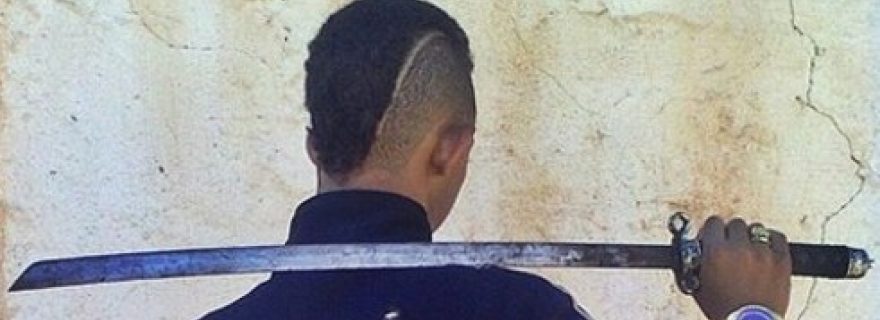Does the haircut make the thug? Why class matters in post-2011 Morocco
In recent years Arab youth have received increasing attention, symbolizing a contradictory image for the West as either heroic anti-authoritarian protesters or radical Islamists. Neither of these images does justice to their local and complex realities.
In recent years so-called ‘Arab youth’ have received increasing attention, both internationally as well as in the region. Inhabiting a spectrum ranging from heroic protester to ISIS fighter, young Arab men in particular have tended to be associated with different degrees of Islamic and political radicalization. As part of these representations, especially in international media, poor urban young men are often seen to be at an increased risk of Islamic radicalization (See Andrea Ellliot's 2007 article in The New York Times, “Where Boys Grow Up to Be Jihadis”). Conversely, events that cannot be explained using a religious angle have received less attention.
One such case was a police operation that led to the arrest of more than 100,000 male youth from lower class, sha‘abi neighbourhoods in major Moroccan cities during the spring of 2014. Although Morocco has a reputation as a moderate constitutional monarchy where repressive measures have been largely renounced since the ascension to the throne of King Mohammad VI (1999), police raids and arbitrary arrests are nothing new. Nevertheless the scale of these raids and the reactions they failed to provoke raise important questions.
Official statements described the raids as part of a campaign to reduce delinquency and urban crime, but the media soon linked them to the ‘Tcharmila phenomenon’. Made visible by the growing online circulation of ‘selfie’ photographs that depicted young lower class males sporting allegedly stolen goods, dressed in track-suits, and handling butcher knives, Tcharmila could have been a mere passing teenage trend. Instead it provoked a national moral panic at the time.
Police vans began to descend on peripheral urban areas like the one in Casablanca where I was carrying out PhD fieldwork at the time, and to summarily remove from the street young lower class men that matched the images circulated online. While in custody, the young men were given ‘disciplinary haircuts’, removing the carefully styled looks that sought to emulate local and international football players.
What is Tcharmila?
In Moroccan Arabic, charmoula signifies a marinade used for the preparation of meat. Some of my local interlocutors speculated that the reason why the term “mcharmil” (sg. someone who was part of Tcharmila) caught on was owed to its derivation from the butcher knives used for the preparation of charmoula, and sometimes donned by the youth in the circulated photos, as a way of impressing viewers. Because the images were predominantly shared over social media, the term soon became viral.
As the scale and perfunctoriness with which arrests were done grew, local media commentators spoke against reifying a mere fad into a ‘gang movement’. An opinion piece in the respected French language weekly magazine TelQuel cautioned against the criminalization of an entire group of already disadvantaged young people, and after one young man who had been summarily detained during one of the police raids committed suicide while in custody, the president of the National Centre for the Study of Human Rights, pleaded for “a more reasoned response” on the part of the authorities.
Despite the collective panic expressed in online forums, it soon became clear that Tcharmila was far from being an organized crime phenomenon. The minor drug dealers and the small sums of money that were reported as confiscated during the raids suggested a fragmented scene typical of petty crime in poor neighbourhoods. Not quite a sub-culture, and certainly not an organized movement, the young mcharmlin boys of Casablanca’s margins were threatening to the social order not because they had engaged in a direct form of collective protest but for what Asef Bayat calls ‘collective presence’.
The aesthetization of social class?
The brief episode I have presented here reveals both the political and the affective power of images. During the Arab Spring protests the Internet (and social networking sites in particular) showcased the medium’s potential as a new public (cyber) space for popular and political mobilization. However, the lukewarm reactions to the sweeping police raids during the Tcharmila episode demonstrate how the same space can serve to polarize public opinion by appealing to criminalizing tropes that dehumanized and rendered as radically ‘other’ the young men of the impoverished urban fringe.
Middle Eastern and North African (male) youth have come to symbolize a most contradictory image for the West. They are honored and praised as the martyrs of anti-authoritarian movements, such as the recent tragic case of Mouhcine Fikri, while at the same time they continue to be associated with radical Islam and terrorist movements. Neither of these tropes does justice to the lived realities of ‘Arab youths’. As such, the Tcharmila raids should push us to think harder about the local complexities of youths’ lives and the distinct, class and gender-inflected realities which shape street politics in the region.



0 Comments